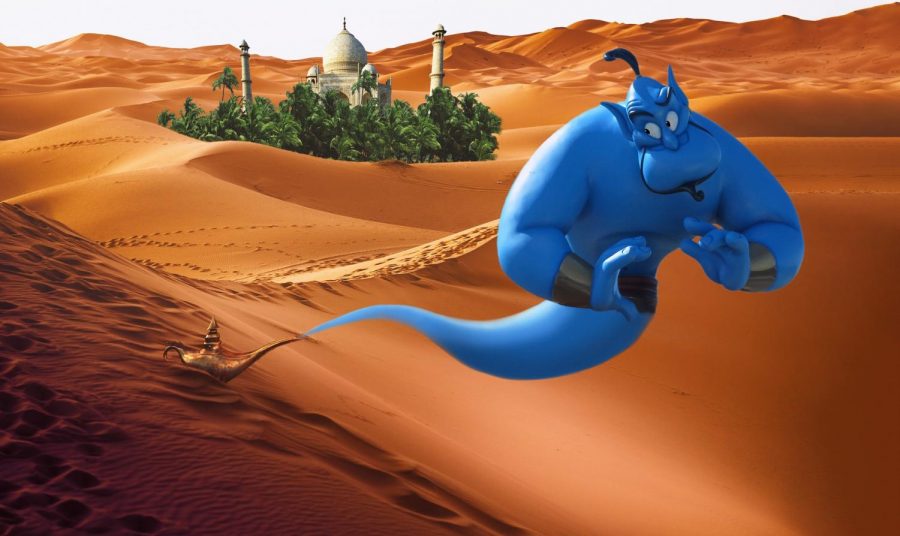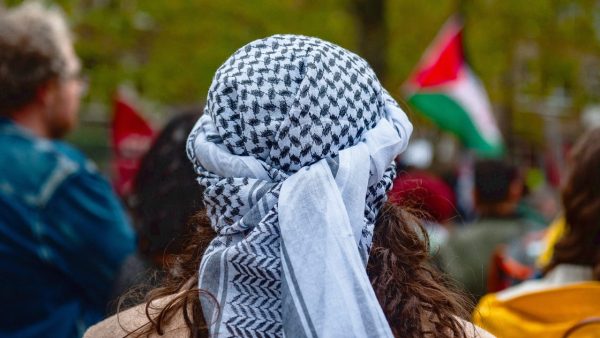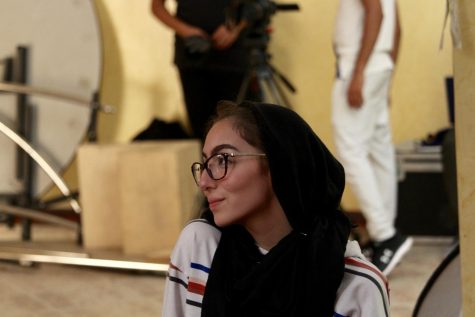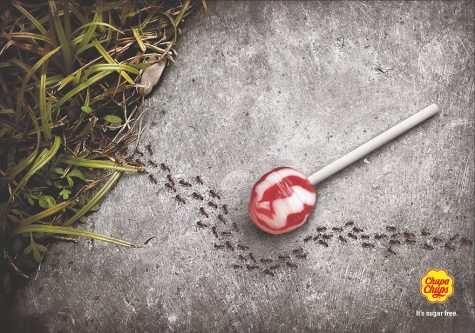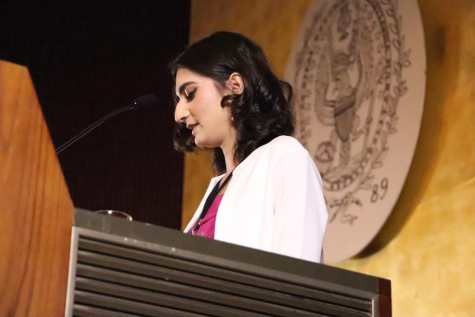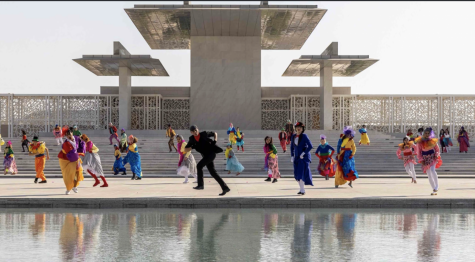Hollywood’s Relentless Discriminatory Depictions of Arab Characters
Disney has triggered a public outcry after revealing plans to produce a spin-off of its live-action “Aladdin” based on the only white character that was featured in the 2019 film. After creating a movie primarily centered on people of color and their cultures, many are confused about why the studio has now chosen to focus on a minor white character. But should anyone be surprised?
Hollywood has not been the best at paying attention to proper Arab and Muslim representation in its productions.
Disney is not the only studio in the industry that has received criticism for its portrayals of Arabs and Muslims more broadly. Popular series such as “Bodyguard” (2018) and “Homeland” (2013), and blockbuster films such as “London Has Fallen” (2016), “Argo” (2012) and “Beirut” (2018) have all been criticized for their biased representation.
The question we should ask ourselves in this context is, despite Hollywood’s seemingly unlimited resource pool and the West’s ethnically diverse population, why do these representations exist and how did they come to be in the first place?
Orientalism: The beginning
Aladdin’s (2019) depiction of the East mystifies and exoticizes the region. The fictional city of Agrabah is illustrated with harems, lavish palaces, and belly dancers. Its heroes speak English in American accents while its villains mostly speak the language in non-American accents. This orientalist portrayal is the film’s primary problem.
Orientalism is something the West has been guilty of for a long time. This concept explains the otherization of the East through the distortion and exaggeration of the differences between the West and the Orient. It is most notably defined, chronicled and explained by Palestinian-American scholar Edward Said in his book “Orientalism.” According to Said, the West’s fascination with the Arab world and South Asia roughly dates back to the colonial era. For the West, “the Orient…[was] a place of romance, exotic beings…and…remarkable experiences,” stated Said. This phenomenon also extended to films. Cinematic depictions, in this regard, primarily included images of “rich oil sheiks, sultry belly dancers, harem girls, veiled oppressed women, and, most notably, terrorists,” writes media scholar of contemporary Arab and Muslim American cultures Evelyn Alsultany in her book “Arabs and Muslims in the Media.” There was a degree of intrigue attached to the exoticism these images portrayed. This wonder was associated with the diverse cultures in the region that was so different from the West’s, cultures that seemed far from ordinary, said Jack Taylor, assistant curator for Northwestern University in Qatar’s (NU-Q) Media Majlis exhibition on Arab images in the film. “This diversity was used as a tool to show Arabs as simple peoples, stupid, primitive, and uneducated,” he added.
Taylor’s characterization of this issue can be seen in multiple films made in early Hollywood. Consider Rudolph Valentino’s “The Sheik” of 1922. The film is most notable for its portrayal of the savage Arab man, according to Brian Edwards, Dean of the School of Liberal Arts at Tulane University. The Sheik’s Arab protagonist is besotted by the white heroine of the film and, therefore, captures her. At one point in the film, when the girl is trying to escape, he grabs her by the waist and forcibly pulls her back inside the tent they are staying in. The man, to her horror, declares “[he] is not accustomed to having [his] orders disobeyed.” In this film, the Arab man is untrustworthy and a violent predator, who treats women as if they are his possessions. “[This portrayal] set a sort of pattern…of cinematic orientalism…which starts to build across the decade,” said Edwards in an interview with NU-Q’s Media Majlis.
This cinematic orientalism extends to the air of mysticism that Hollywood began to link to the Arab world. “The Mummy” (1932), for example, popularized the idea that ‘Eastern’ or, in this case, ‘Arab’ beliefs were superstitious. The film is about British archeologists who unknowingly revive an ancient Egyptian high priest, Imhotep, by uncovering his remains and reading aloud a cursed scroll. Imhotep, believing the film’s white heroine, Helen, to be the reincarnation of his lost love, almost kills her so the two can be united in immortality. This film works to exaggerate the difference between the superstitious, dangerous East and the rational, enlightened West. Its happy ending occurs when the white heroine rids herself of her Egyptian identity. Its villains are not the British archaeologists who, disregarding the cultural rules of the site they were investigating, released Imohtep in the first place.
This history of such films is deep-rooted in one-dimensional representations of the Middle East. In both “The Sheik” and “The Mummy,” as well as in many earlier films like them, Arab characters were played by white actors. Brownface was used as a tool by these actors to perform the Arab identity. This method is categorized as particularly dehumanizing because it reduced an ethnicity to just a skin color, creating a racial pantomime that grossly exaggerated the difference between white people and non-white people.
Current portrayals of Arabs
Fast forward to the 2000s and this industry has not yet improved its representation of Arabs and their cultures.
The ‘Arab Villain’ is a usual appearance in many action films. In these movies, Middle Eastern terror groups plan intricate and maniacal schemes of destruction (such as bombings and kidnappings), while the white hero or savior prepares to thwart these plans.
In “London Has Fallen” (2016), for example, terrorists of obscure Middle Eastern and South Asian origin coordinate attacks on world leaders, including the American president, as revenge for drone strikes carried out on their respective countries. In one scene, the white protagonist of the film tells these terrorists to “head back to Fuckheadistan or wherever it is you’re [they’re] from.” The film ends happily, as this character manages to save the U.S. president and defeat the brown terrorists.
Similarly, in “Beirut” (2018), a party hosted by American diplomat Mason Skiles is attacked by Palestinian terrorists who kill his wife. The rest of the film shows how Skiles copes with this traumatic incident while he is faced with the task to rescue a colleague who has been abducted by the Islamic militia responsible for his wife’s death. “Beirut,” in its depiction of good versus evil, pits Arabs with guns and explosives against heroic American victims in a dangerous desert city.
In modern cinema, the Arab aggressor has evolved to the Arab terrorist, stated Egyptian-German film theorist Viola Shafik in an interview with NU-Q’s Media Majlis. This is not to say that Arab or Muslim terror groups do not exist, or that attacks carried out by them have never occurred. These portrayals are problematic because they are the most popular, and often the only portrayals of Arabs in Hollywood. “I don’t think that there is fundamentally anything wrong with portraying Arabs as terrorists, but there is something wrong when we don’t see them as anything else,” said Alsultany.
The West’s depictions of Arabs also tend to homogenize the Eastern world. Continuing an Oriental tradition to conflate identities, Arabs from different regions, Muslims and South Asians are interchangeably used in TV and film.
“Beirut,” for example, was filmed in Morocco instead of Lebanon. None of the main characters are played by Lebanese actors in this movie; the film mostly featured actors of Algerian descent playing Lebanese characters. In the same way, Egyptian characters in “The Mummy” (1999) speak Arabic in the Moroccan dialect. And Disney cast an actress of Indian descent to play the Middle Eastern actress in “Aladdin” (2019). “It is commonly assumed that Iranians and Pakistanis are Arab and that all Arabs are Muslim and all Muslims Arab,” noted Alsultany about the ways in which non-white people are pushed under one category by the West.
Influencing perceptions: The impact of stereotypes
Stereotypes are simplified characterizations of people, cultures or places. The problem with stereotypes, according to Edwards, is that they imply accuracy in their characterizations. Through repetition, stereotypes formalize their simplistic portrayals of identity, added Edwards. “Once an image has been depicted, repeated, and accepted to be representative, it becomes hard to reverse its effect,” said Taylor about this issue. According to Taylor, films meant for entertainment have the ability to be accepted as the truth because of the long-lasting and consistent nature of visual media.
Taylor stated that the depiction of Arabs as terrorists heightened after the 9/11 attacks in New York City. The War on Terror generated an air of fear and mistrust among people in America, and political discourse triggered questions of anti-American sentiment felt by Muslims, wrote Alsultany. Films and television shows did not dispute this fear and mistrust, and, at many times, used it to construct stereotypes concerning Arabs, she added.
“Homeland” (2013), for example, shows the metropolitan capital of Pakistan as a violent dilapidated city, surrounded by street signs written in Arabic, ridden with conflict and riots. The Iranians in “Argo” (2012) –– afforded little to no individual screen time, and almost exclusively shown in large, loud crowds furiously arguing over instances such as American strangers taking pictures of them–– are overwhelmingly aggressive, cruel and hateful towards Americans.
In this context, stereotypes tend to misrepresent the complexity of the different groups of people they describe, stated Karine Walther, associate professor in residence of history at Georgetown University in Qatar, in an interview with NU-Q’s Media Majlis. They propagate “the idea of Arabs as being more violent or fanatical than other groups,” she added. However, this does not mean that Arabs must be shown as particularly benevolent either. “It’s not about portraying Arabs only as good, but complex in their humanity,” said Alsultany, when speaking to the Media Majlis about Arab representation in Western films.
This is particularly important because of the adverse effects of Hollywood’s stereotypical representations. These portrayals, she said, give people reasons to justify prejudice and racial attacks, legitimize political discrimination in areas such as housing, employment and education, and popularize notions such as ‘torture is going to work better on Arabs.’
Similarly, misrepresentation of identity through the conflation of one or more cultures impacts the way people from different regions are viewed.
In “Aladdin” (2019), Agrabah is an exotic mixture of India and parts of the Middle East. In this movie, the distinction between the various cultures used to create this world is not made clear. An audience expects the film to be set in the Arab world. After all, its title song is called “Arabian Nights.” Therefore, when it uses the keffiyeh and the turban interchangeably, or when it sprinkles in some Bollywood dance moves at different points in the film, it eliminates the difference between the cultures it claims to represent––they unite under the umbrella of the ‘East.’
Big movies and big studios: The persistence of stereotypes
According to the 2017 Arab American Institute survey, around 3.5 million Americans are of Arab descent. Another study published by the Pew Research Center at the end of 2018 shows that racial and ethnic minorities make up 48% of the post-Millennial generation in the United States. Despite this multicultural community, insensitive stereotypes still persist in America’s film industry.
This is because stereotypical representations of minority groups, no matter what the reality of their demographic is, are a safer option for Hollywood film producers to take when making their films. Using stereotypes, Taylor stated, reduces the perceived risk of not appealing to a wider market. Most filmmakers are not willing to invest extra time or money into researching to create nuanced characters from different ethnic groups, he added.
Anka Malatynska, an American cinematographer, said in a discussion on film criticism that the hierarchy within Western film studios and TV networks is not conducive to diverse perspectives. It is true that the directorial board of Hollywood’s biggest studios are white-dominated, 10 of the 16 people on Universal Pictures’ board of directors are white men, for example. Not one is Arab. Similarly, the leadership team of Warner Bros. Studios has only around three people of color.
Evolving portrayals
However, Malatynska says she is still hopeful. With the rise of streaming services such as Netflix and Hulu, which try to cater to specific demographics of audiences rather than one large audience, filmmakers of different ethnicities are afforded the chance to represent their own stories, she stated. Examples of this include series such as “Ramy” (2019). The series, created by Ramy Youssef, an American comedian of Egyptian descent, follows the life of a young Egyptian-American as he struggles with family, friends, dating and his religious beliefs.
Even outside of these services, Arab-American actors have contributed to better representation in television. Yasmine Al Massri in “Quantico” (2015) and Ahd Khalel in “Collateral” (2018) play women who exist not just to be saved. These women are not defined by their victimhood; rather they are women who love, lose and feel pain. Human, in other words.
Moving Forward, is this change enough?
A large segment of the U.S. population still views Muslims and Arabs unfavorably.
In 2016 it was found that 41% of U.S. adults thought that Islam encourages violence. Racialized views such as these can also impact support for racial policies. A 2017 Politico-Morning Consult poll discovered that 6 in 10 American voters backed the U.S. government’s travel ban on six Muslim-majority countries.
These numbers are specifically concerning because of the prejudice they reflect. In this case, cinematic depictions of the group in question become crucial to address. “[Stereotypical representations] could…justify prejudiced feelings towards a certain group,” stated Taylor about the harm of Hollywood’s most common portrayals of Arabs and Muslims. Representations of Arabs and Muslims as either good in terms of their loyalty to Western values, or bad in terms of their loyalty to the tyrannical terrorists of the Arab world can be dangerous. These portrayals, wrote Alsultany, can help to form a kind of ideology that “produces the logics and affects necessary to legitimize racist policies and practices.”
Moving forward, images of Muslims––Arab or not––that may contribute to intolerant and bigoted beliefs need to be rethought and changed. As Taylor stated, filmmakers need to “dig deeper;” they need to focus on the details and nuances of the stories they tell and encourage more diverse narratives within cinema. What this industry needs, in particular, are more films and television series that show Arabs as regular people: not extraordinarily good and magical or terribly evil and barbaric. Just, regular.



